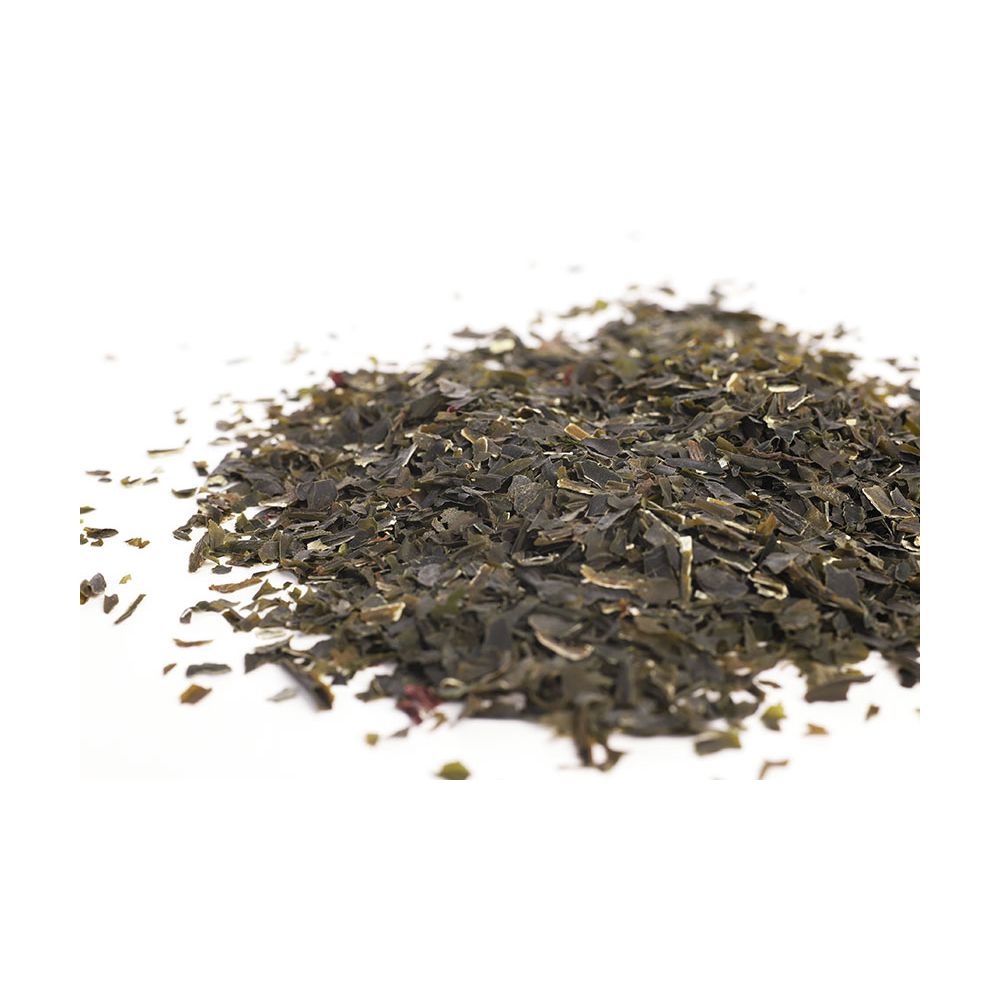VitaminSea Alaria Wakame Seaweed Flakes 2oz (56g)
Currently, looking at this product
2oz Alaria Wakame Seaweed Flakes harvested from the Coast of Maine
Sustainably Harvested
Product of USA
Latin Name: Alaria esculenta
Sustainably harvested in Maine, Alaria is a great substitute for wakame as it is so similar to traditional Japanese wakame. Alaria is the most delicate of the brown seaweeds. It can be used to create a Miso soup with a wild, yet delicate flavor. Alaria, as with many sea vegetables, contains many of the vitamins and minerals needed to live a healthy life.
Nutritional Values
Alaria (alaria esculenta) has one of the highest sources of calcium. It is rich in B complex vitamins, vitamins A, C, and K. High in protein, iron, magnesium, iodine, sodium, chromium, zinc, phosphorus, potassium, and dietary fiber. Alaria is almost identical to Japanese wakame biologically and nutritionally.
Culinary Uses
Alaria is excellent for Miso soup and makes calcium rich vegetable soups, and stews. It imparts a chicken-like flavor when cooked with rice. Whole leaf alaria can be used uncooked in salads if pre-soaked, marinated in lemon juice, blanched or steamed. It can also be quick roasted and enjoyed as 'chips'. Alaria has more delicate taste but needs a longer cooking time (40 minutes) than the cultivated Japanese wakame (15 minutes). Soak prior to cooking and use the soaking water. Powdered Alaria is a great addition to any energy or protein drink that needs mineral fortification (particularly calcium).
| Vegan | Yes |
|---|---|
| Gluten Free | Yes |
| Kosher | No |
| Paleo Friendly | Yes |
| Size | 2oz (56g) |
| How to Use |
|
| Ingredients | Alaria (Alaria esculenta) |
| Storage | Store in a cool, dry place. |
| Contraindications | May contain trace amount of shellfish. Please check for tiny shells or pebbles hidden in the leaves before consuming. Also, the white powdery substance is common. This powder consists of precipitated salts and sugars and is safe to eat. |

